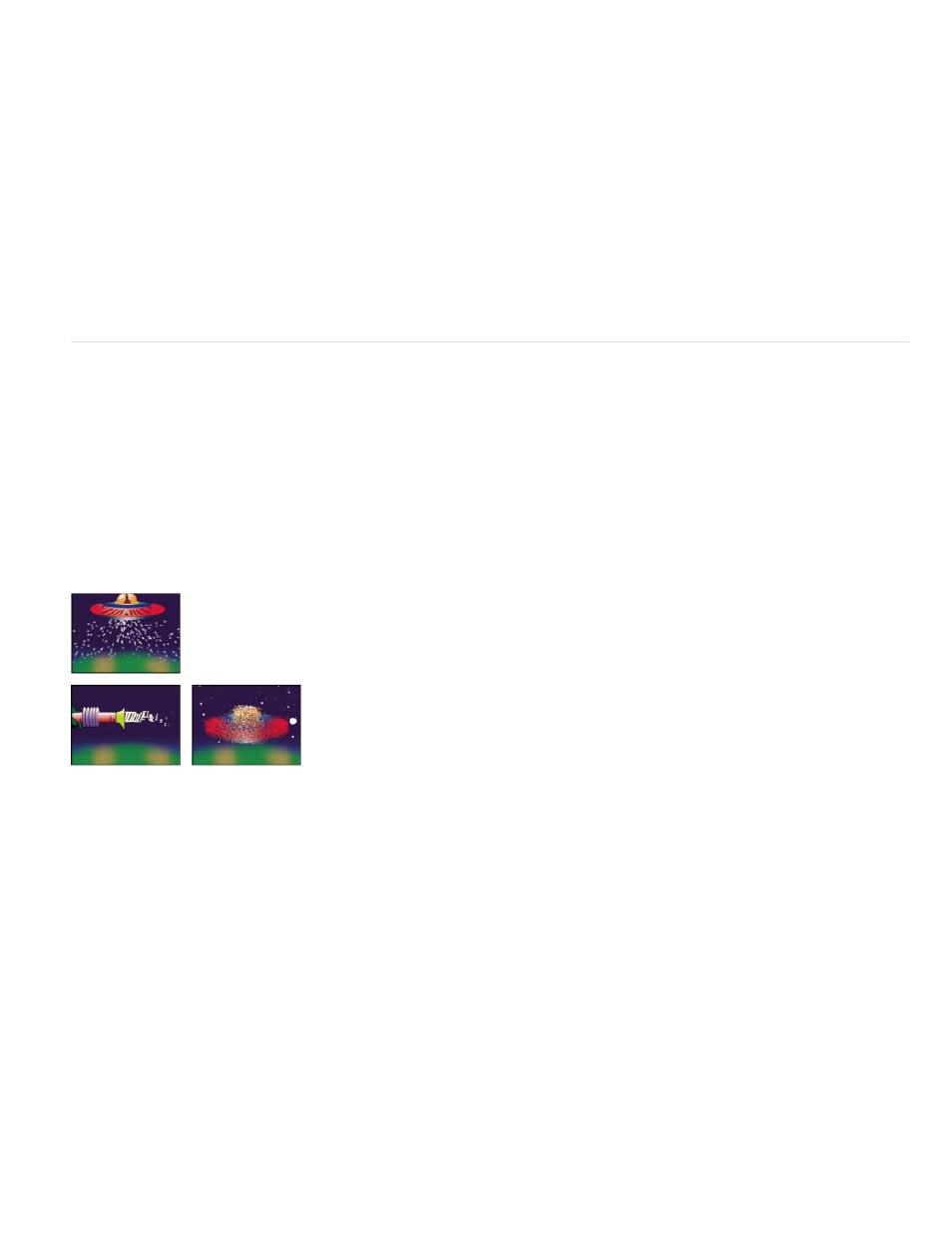Particle playground effect – Adobe After Effects User Manual
Page 567

Flow Map Steepness
Flow Map Fits
Simulation Quality
Note:
have excessively abrupt edges.
Controls the difference between white and black as they are used to determine steepness. If the bubbles are ricocheting
randomly off the flow map, decrease this value.
Specifies whether the flow map is relative to the layer or to the universe. The flow map resizes itself to fit whichever you specify.
This control is useful when you want to enlarge the universe but the flow map is designed for a particular layer, or when you want the bubbles to
start outside the frame and be affected by the flow map as they arrive in the frame.
Increases the precision, and therefore the realism, of the simulation. However, the higher the value, the longer the
composition takes to render. Normal generally produces good results and takes the least amount of time to render. High returns better results but
takes longer to render. Intense increases the rendering time but produces more predictable bubble behavior. Use this option if the bubbles aren’t
following the flow map. It often solves problems of erratic behavior that can occur with small bubbles, high bubble speeds, and steep slopes.
Particle Playground effect
The Particle Playground effect lets you animate a large number of similar objects independently, such as a swarm of bees or a snow storm. Use
the Cannon to create a stream of particles from a specific point on the layer, or use the Grid to generate a plane of particles. The Layer Exploder
and Particle Exploder can create new particles from existing layers or particles. You can use any combination of particle generators on the same
layer.
David Van Brink provides a video walkthrough and downloadable example project on the
that show several things that you can do
with the Particle Playground effect, including how to use the Kinetic Friction ephemeral property mapper.
Brian Peterson provides a tutorial on the
that shows how to use the Particle Playground effect to create a flock of birds.
This effect works with 8-bpc color.
Particles shooting out of the spacecraft layer (upper-left), text characters used as particles shooting out of a ray gun (lower-left), and Layer
Exploder used on spacecraft layer (lower-right)
Start by creating a stream or plane of particles, or by exploding an existing layer into particles. Once you have a layer of particles, you can control
their properties, such as speed, size, and color. You can replace the default dot particles with images from an existing layer to create, for example,
an entire snowstorm from a single snowflake layer. You can also use text characters as particles. For example, you can shoot words across the
screen, or you can create a sea of text in which a few letters change color, revealing a message.
Use Cannon, Grid, Layer Exploder, and Particle Exploder controls to generate particles. Use Layer Map controls to specify a layer in place of each
default dot particle. Use Gravity, Repel, and Wall controls to influence overall particle behavior. Use Property Mapper controls to influence particle
properties. Use Options to set options, including options for substituting text characters in place of dots.
Because of the complexity of Particle Playground, you may experience long computation, preview, and render times.
Use Particle Playground
1. Select the layer on which you want particles to exist, or create a new solid layer.
2. Choose Effect > Simulation > Particle Playground. The layer becomes an invisible layer in which only the particles are visible. Animating the
563